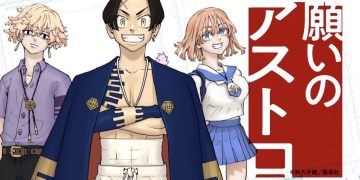Darling in the Franxx burst onto the anime scene in 2018 with high expectations. The series was helmed by acclaimed studio Trigger, known for hits like Gurren Lagann and Kill la Kill. DarliFra initially lived up to the hype, delivering an exciting blend of mecha action and teenage drama.
Set in a post-apocalyptic future, the show follows a group of young pilots tasked with defending humanity’s last refuge from monstrous creatures called klaxosaurs. That is why fans are trying to find out why Darling in the Franxx is so hated.
However, DarliFra ultimately failed to stick to the landing. After a strong start, the series began losing steam around the halfway point. The mecha battles and sci-fi mystery took a backseat to the romantic melodrama between the protagonists Hiro and Zero Two.
This love story hit an emotional crescendo in Episode 15. Unfortunately, nothing after that matched that height of drama or action. By the end, many fans felt let down by an incoherent, unsatisfying conclusion.
The promise of Darling in the Franxx’s early episodes was never fulfilled. What began as an ambitious genre mash-up fizzled out into something much less interesting. While the series had its moments, it could not maintain creative momentum or narrative focus. Ultimately, Darling in the Franxx stands as a disappointing case of squandered potential.
What Darling in the Franxx Is All About?
Darling in the Franxx is an anime that stands out for several reasons. Firstly, the character of Zero Two is incredibly captivating and fun. She commands attention whenever she’s on-screen, not just because she’s the female lead, but because of her mysterious yet alluring persona that makes viewers eager to learn more about her.

Secondly, the show’s visual aesthetic is striking and cinematic in an old-fashioned, stylized way. It’s clear the creator put a lot of thought and effort into the look and feel of the anime. While some may argue the style over substance approach, there’s an undeniable grandeur and flair to Franxx that sets it apart.
Thirdly, the show taps into that inexplicable “feeling” that makes audiences connect emotionally with a story, even if the writing isn’t technically perfect. This is similar to why other anime like Mirai Nikki are so beloved – they elicit a visceral response that transcends objective critiques.
Finally, Franxx utilizes classic storytelling devices effectively. It brings together two damaged protagonists who complement each other, all set against a backdrop of epic mecha battles. The fun cast of characters and mysteries of the world leave viewers wanting more. The show also excels at nuanced world-building through subtle details rather than info dumps.
Why Darling in the Franxx Is So Hated? Explained
One of the main issues with Darling in Franxx’s ending was the repetitive, shallow drama between the characters. The emotional reunion between Hiro and Zero Two was drawn out across multiple episodes with little meaningful development.

Meanwhile, the rest of the cast was largely sidelined with uninteresting subplots. Compared to the first half’s strong character writing, these final episodes fell flat.
The sudden introduction of an alien threat also felt jarringly out of place. After focusing on the klaxosaurs for so long, bringing in extraterrestrial villains at the last minute came off as a desperate attempt at raising the stakes. This twist might have worked better in a pure action series but felt inorganic to DarliFra’s established story.
Additionally, the design of the ultimate mecha Strelizia True Apus was bizarre and immersion-breaking. Having this gigantic robot take on the physical form of Zero Two herself stood out as fantastical and cartoonish, clashing with the show’s semi-grounded mecha aesthetic.
As Darling in the Franxx progressed, its homages to classic sci-fi anime started feeling increasingly unoriginal and derivative. At first, the nods to shows like Evangelion and Gurren Lagann worked fine in moderation with the series’ own ideas.

However, it became clear the writers were just copying these elements without understanding what made them effective originally. The introduction of aliens, in particular, displayed this lack of nuance.
Many fans were also frustrated by the lack of meaningful character deaths in the finale. Despite the enormous stakes and hordes of inexperienced pilots, the only losses were minor characters no one cared about.
Even Hiro and Zero Two’s sacrifices were undone by their reincarnation – an unrealistic twist for the show’s sci-fi worldbuilding. For such a climactic battle, higher emotional stakes through impactful loss were needed.
The ending’s pacing was also criticized as paradoxically both too rushed and too slow. Though told across just two episodes, the epilogue jumped ahead nearly a decade to show the survivors moving on.
This time, the skip undermined investment in the characters, making their conclusions feel unearned. A more focused, gradual resolution could have made moments like the group restarting society genuinely poignant.
In the end, DarliFra buckled under the weight of its own influences and ambition. Interesting early ideas gave way to derivative, insubstantial copying and a disjointed finale. With tighter writing or a better understanding of its predecessors, the series could have reached the heights promised by its stellar beginning.





